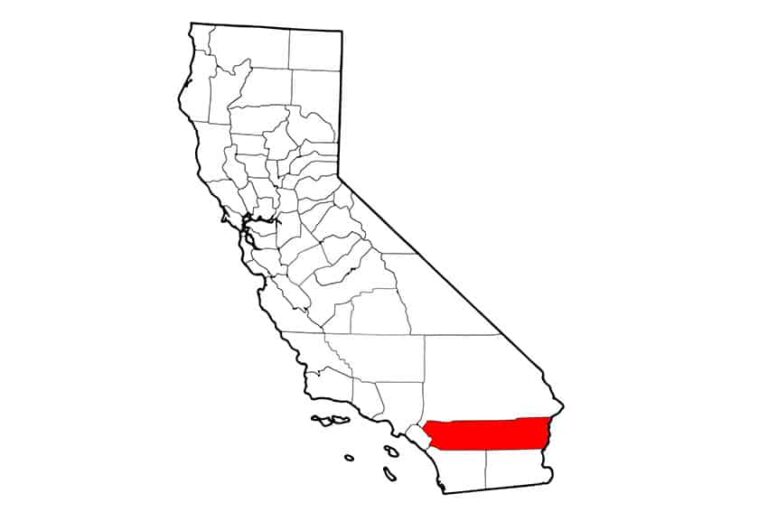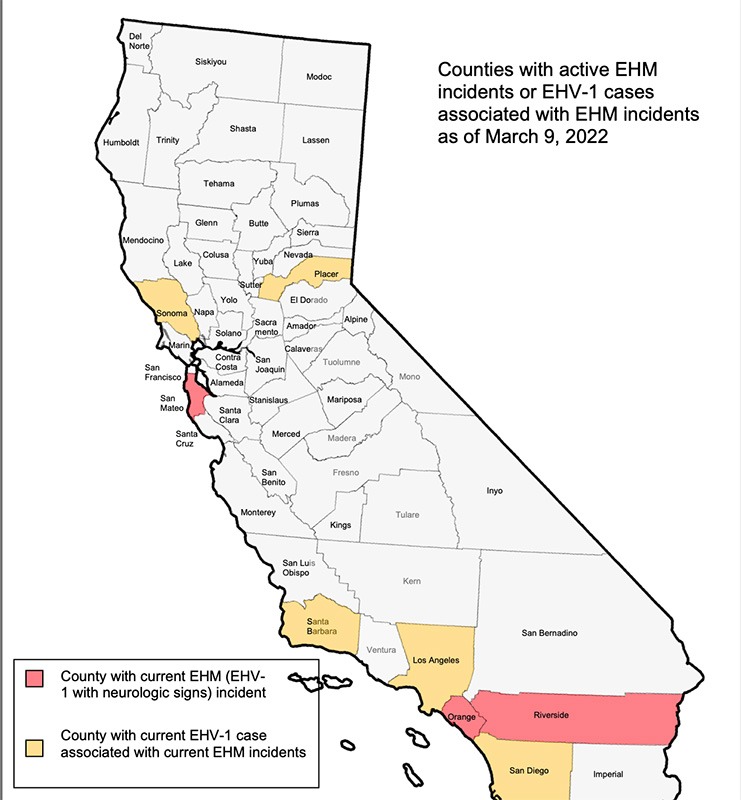The Riverside County premises were released from quarantine after one horse tested positive for EHM in December.
In December, a Quarter Horse mare tested positive for EHM on private property in Riverside County, California. Four other horses were abandoned. No other cases have been confirmed and the facility has been released from quarantine.

EDCC Health Watch is an equine network marketing program that uses information from the Equine Disease Communication Center (EDCC) to create and distribute validated equine disease reports. EDCC is an independent, non-profit organization supported by industry donations to provide open access to infectious disease information.
EHV101
Herpesviruses are highly contagious among horses and can cause a variety of diseases in equine animals, including rhinopneumonitis (a respiratory disease usually seen in young horses), broodmare abortion, and EHM.
In many horses, the first or only sign of EHV-1 infection is fever, which may go undetected. Besides fever, common signs of EHV-1 infection in her young horse include coughing, loss of appetite, depression, and nasal discharge. Pregnant mares usually show no signs of infection before an abortion, which usually occurs late in gestation (about 8 months), but can be earlier.
A miscarriage can occur between two weeks and several months after she becomes infected with EHV-1. Horses with EHM usually have a fever early in the illness and may show signs of respiratory infection. After a few days, neurological symptoms such as ataxia (incoordination), weakness or paralysis of the front and hind legs, urinary retention and dripping, loss of tone in the tail, and lying down (inability to stand up) develop.
The herpes virus is easily spread from nose to nose or through close contact with an infected horse. Share contaminated equipment such as bits, buckets, and towels. Clothing, hands, or equipment of persons who have had recent contact with contagious horses. Regular biosecurity measures, including hygiene and basic cleaning and disinfection procedures, should always be implemented to prevent the spread of disease.
Current EHV-1 vaccines may reduce viral shedding but cannot protect against neurological disease. Implementing routine biosecurity practices is the best way to minimize the spread of the virus, and the best way to control the disease is disease prevention.


